The electromagnetic group
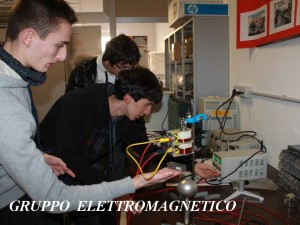 Van der Graaf Generator
Van der Graaf Generator
Van de Graaff machine like the one that we reconstructed is an electrostatic machine able to accumulate a considerable amount of electric charge in an electric conductor, creating between this and a reference electrode, usually grounded, a very high voltage (it can be up to tens of thousands of volts). It consists of a belt of insulating material stretched between two rollers and maintained in rotation by a motor. The belt is charged by induction from a series of metal points (point effect) arranged in the vicinity of the lower roller and connected to a DC voltage generator (for example a battery) or by making sure that get charged by rubbing. These charges are then transported by the action of the engine within an isolated spherical conductor, where a second metal comb electrically connected to the ball moved on the surface of the latter reaches a very high voltage. Despite the high voltage the machine is not dangerous because the powers involved are low.
Principle of operation
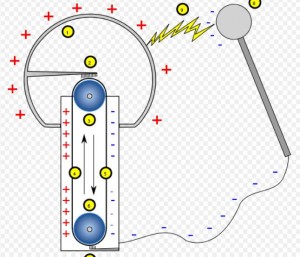 The creation of lightning
The creation of lightning
A generator of this type is basically composed of a belt of insulating material between two pulleys and maintained in rotation by a motor. The belt is charged by induction from a series of metal points (point effect) arranged in the vicinity of one of the two pulleys and connected to a DC voltage generator (for example a battery). These fillers are then transported by action of the motor within a conductor of isolated spherical shape, where a second metal comb electrically connected to the ball moves on the surface of the latter. If you do not turn off the machine the process stops when the voltage of the sphere is sufficient to produce electrical discharges through the insulating support (dielectric breakdown) or through the surrounding air (air ionization). The typical experiment that is done is to bring the ball into a voltage conductor to ground and observe the discharge that occurs in a manner similar to lightning.
Electric reel
We loaded the electric reel we built connecting it with the Van de Graaff machine. 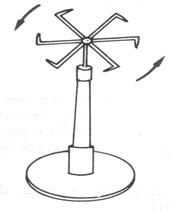 A reel is a conductor provided with a series of metal rays all folded in the same direction and ending with a tip. For the principle of conservation of momentum, there is a movement of ions which are repelled from the tips is a movement of ions, transmitting to them their own momentum. The reel thus assumes a rotary motion in the direction opposite to that according to which are curved metal tips
A reel is a conductor provided with a series of metal rays all folded in the same direction and ending with a tip. For the principle of conservation of momentum, there is a movement of ions which are repelled from the tips is a movement of ions, transmitting to them their own momentum. The reel thus assumes a rotary motion in the direction opposite to that according to which are curved metal tips
Coil Lifter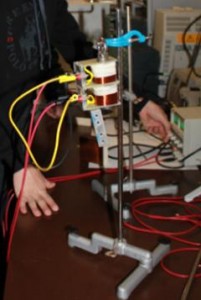
We have two coils connected in parallel, to have the maximum power available from our generator in each of the two coils, and inside we put a box of ferromagnetic material in order to increase the magnetic induction field. Giving continuous voltage to the windings is created a magnetic field that has the property of attracting iron interact with objects (in our particular case it is a weight not exceeding 500 g).
Oersted’s experiment
Named after the physicist Hans Christian Oersted who led him in 1820. It was the first experiment to demonstrate a correlation between the electric current and the magnetic field. It consists in putting a theme such as the north-south direction on a compass and then pass current in it: it is observed that the compass needle, if the current has an intensity adequate, you have perpendicular to the conductor. And ‘from this experiment that Einstein, in his book “The Evolution of Physics”, gives birth to the modern physics.
While preparing the material for a lecture, Ørsted discovered something that surprised him much: he approached a magnetic compass to an electric wire in which current flowed and the magnetic needle of the compass suddenly moved. Ørsted was so surprised that he repeated the experiment several times.

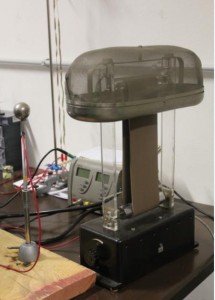
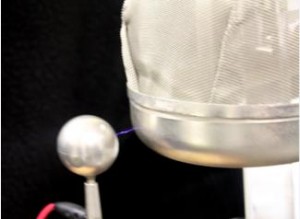
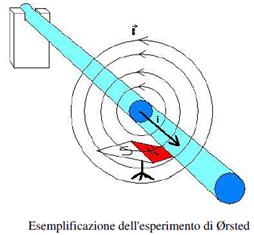
Leave a reply
You must be logged in to post a comment.